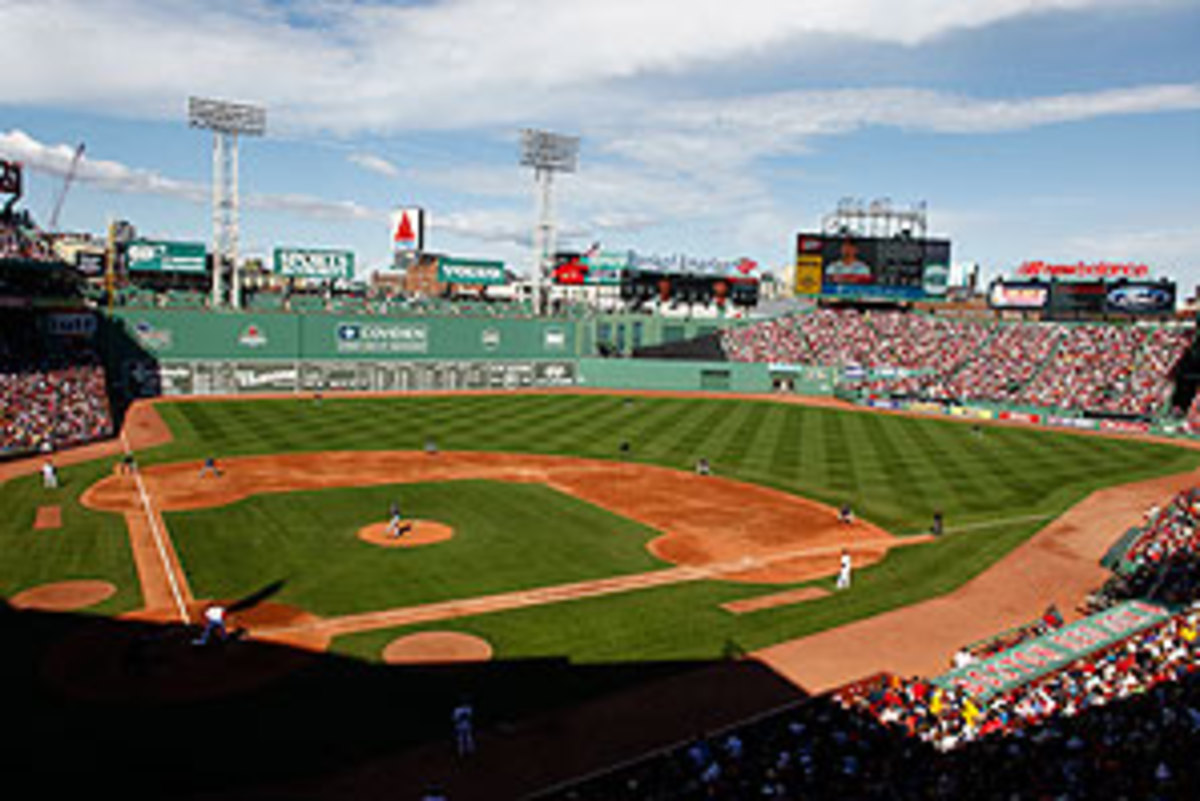At 100, Fenway Park is baseball's oldest venue -- and still its best


Baseball's newest venue is officially open, and it's impossible to look at Marlins Park in Miami without thinking, That place looks like fun. The fish swimming in the backstop, the Jacques-Cousteau-meets-Timothy-Leary home run sculpture, the South Beach nightclub satellite behind the bullpen, the pop art installations scattered on the courses: Marlins owner Jeffrey Loria isn't kidding when he says the ballpark he helped conceive and build "is meant to make you smile." Loria spent enough on free agents this winter to sound believable when he says he wants fans to focus on the game and the team. But, just in case your mind wanders, he made sure that baseball is not the only entertainment option at Marlins Park.
Baseball's oldest venue is about to open for its 100th anniversary season, and it's easy to look at Fenway Park and think, What's so fun about that place? At first glance, there's little at Fenway to make the casual visitor smile. It's not easy to find in the labyrinth Boston calls a city plan. If you manage to get there by car, it's nearly impossible to park. If you tune in for the Red Sox' April 13 home opener, you'll see fans bundled up like it's a playoff game at Lambeau Field. They'll be crammed into seats made for 1912-sized derrieres, and most of their heads will be twisted at 70-degree angles to glimpse home plate. Anyone looking for fish will have to flip over to Wicked Tuna.
The first game at Fenway, on April 20, 1912, set the tone for the next 100 years: The Red Sox didn't even hold an opening ceremony -- "the real-down-to-the-book official dedication with the music stuff, the flowers and the flags," as the Boston Globe wrote then -- until May 17. The implicit message from the new Fenway to its fans: This is a baseball park. You are here to watch baseball.
Fenway has been dressed up over the years, particularly in the decade since John Henry and friends bought the Red Sox and committed to staying in the old yard rather than building a replacement. There are seats above the Green Monster, a bar on the right field roof, a food court beneath the bleachers. But the creature comforts still lag behind what can be found at the wave of mallparks that have sprung up around the majors over the last two decades. Forget aquariums and swimming pools and steakhouses. The main attraction at Fenway is the same as it was the day it opened: baseball.
In 2012, that simplicity, that purity of purpose, is as much of a novelty on the major league landscape as Loria's psychedelic sculpture. As much as the famous proximity of its seats to the field, it's what makes Fenway baseball's most intimate ballpark, and what connects fans there to the sport in a way that isn't possible anyplace else. In some ways, the experience of taking in a game at Fenway mirrors the experience of playing there. Fans who navigate narrow concourses to get to seats with too little legroom are watching players who dress in a cramped clubhouse, work out in a tiny (by big-league standards) weight room and are bedeviled by the strange hops and caroms created by the field's many nooks and crannies. Playing baseball is difficult, and requires a special commitment. At Fenway, the same goes for watching it.
Over the next six months we'll hear a century's worth of hosannas to Fenway Park, but the place hasn't always been beloved. Over the years pitchers fed up with its cozy dimensions and players and managers frustrated with its substandard facilities have taking turns suggesting that it be burned down (Sparky Anderson's choice) or blown up (Mo Vaughn, David Wells, John Lackey). Until the current ownership group spruced up the place with a series of renovations, there were strident calls from Boston fans and media for a new stadium to be built.
And yet, Fenway endured and now, on its 100th birthday, it thrives, a shrine to the game and to a simpler sports era. Ballpark fads come and go. Fenway has outlasted concrete contemporaries like Tigers Stadium and the original Yankee Stadium. It has surpassed the life spans of domed wonders of the earth and cookie-cutter, multipurpose ovals. And its allure will hold strong long after the novelty of retro chic and rightfield shopping districts and in-house marine life fades. For 100 years, the joy of Fenway has been the unadorned, uncomplicated joy of the game itself -- a joy that connects us to the thread of history like little else. Over the next few weeks, as 30 major league parks open for another season, cries of "Play ball!" will ring out in parks across the country. The message will be at its purest in Fenway.
